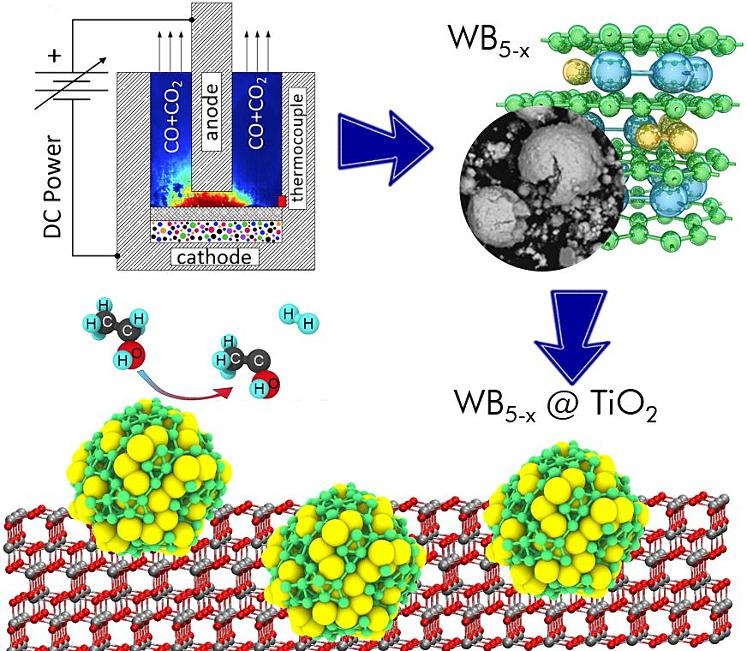Tungsten pentaboride WB5-x
Tungsten pentaboride (WB5-x) is a unique material possessing a number of exciting physical and chemical properties
Discovery of chemically modified higher tungsten boride by means of hybrid GNN/DFT approach (npj Comp. Mat. 2025, 11, 163)
High-throughput search for new crystal structures is extensively assisted by data-driven solutions. Here we address their prospects for more narrowly focused applications in a data-efficient manner. To verify and experimentally validate the proposed approach, we consider the structure of higher tungsten borides, WB4.2, and eight metals as W substituents to set a search space comprising 375k+ inequivalent crystal structures for solid solutions. Their thermodynamic properties are predicted with errors of a few meV/atom using graph neural networks fine-tuned on the DFT-derived properties of ca. 200 entries. Among the substituents considered, Ta provides the widest range of predicted stable concentrations and leads to the most considerable changes in mechanical properties. The vacuumless arc plasma method is used to perform synthesis of higher tungsten borides with different concentrations of Ta. Vickers hardness of WB5-x samples with different Ta contents is measured, showing increase in hardness.
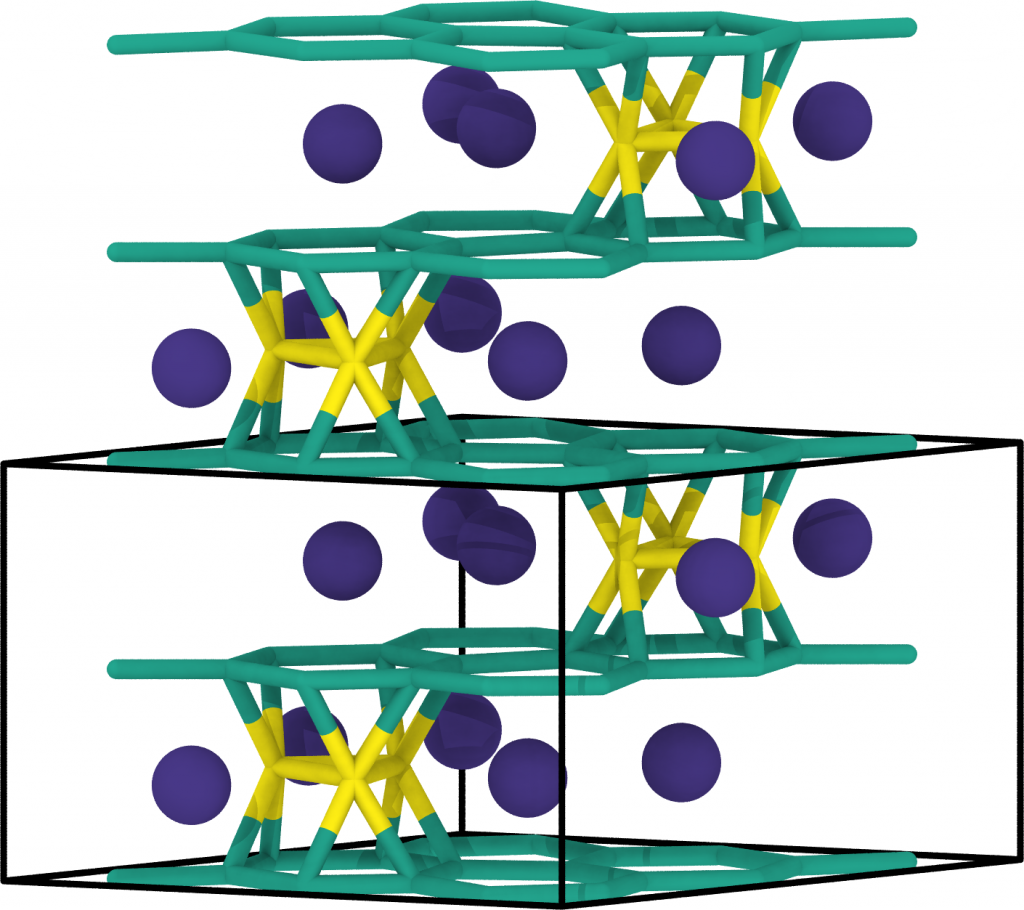
Theoretical study of adsorption properties and CO oxidation reaction
on surfaces of higher tungsten boride (Sci. Rep. 2024, 14, 12788) PDF
Most modern catalysts are based on precious metals and rear-earth elements, making some of organic synthesis reactions economically insolvent. Density functional theory calculations are used here to describe several differently oriented surfaces of the higher tungsten boride WB5-x, together with their catalytic activity for the CO oxidation reaction. Based on our findings, WB5-x appears to be an efficient alternative catalyst for CO oxidation. Calculated surface energies allow the use of the Wulff construction to determine the equilibrium shape of WB5-x particles. It is found that the (010) and (101) facets terminated by boron and tungsten, respectively, are the most exposed surfaces for which the adsorption of different gaseous agents (CO, CO2, H2, N2, O2, NO, NO2, H2O, NH3, SO2) is evaluated to reveal promising prospects for applications. CO oxidation on B-rich (010) and W-rich (101) surfaces is further investigated by analyzing the charge redistribution during the adsorption of CO and O2 molecules. It is found that CO oxidation has relatively low energy barriers. The implications of the present results, the effects of WB5-x on CO oxidation and potential application in the automotive, chemical, and mining industries are discussed.
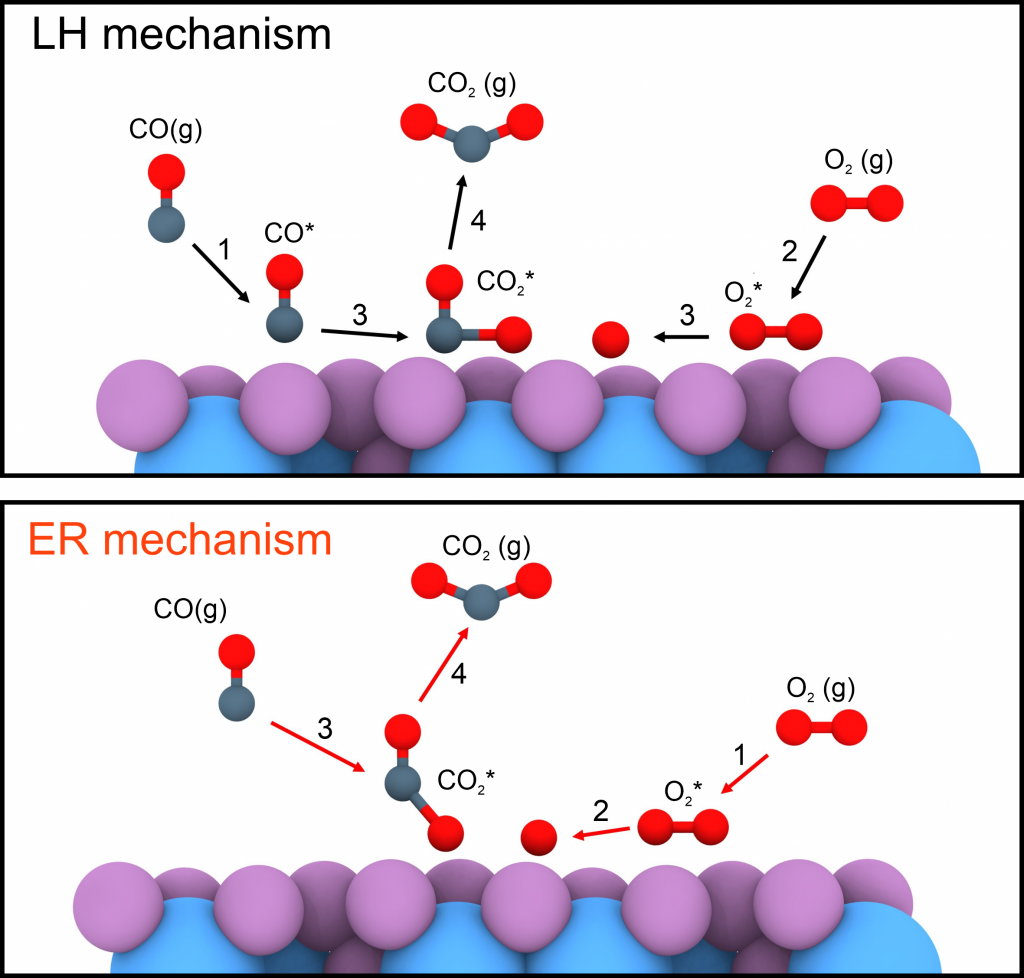
Application of tungsten pentaboride as cocatalyst for photocatalytic H2 evolution and CO2 reduction (Appl. Surf. Sci. 2024, 661, 160095) PDF
Catalytic reactions play an important role in modern industry as almost 90 % of the chemical industry is based on catalytic reactions. The development of new, more efficient catalysts will allow significant advances in chemical production, but still remains a rather challenging problem for materials scientists. Here, we have proposed and investigated a new composite photocatalyst based on WB5-x-WB2 and TiO2 for H2 evolution from aqueous ethanol solution and CO2 reduction under visible light irradiation (410 nm). New composite photocatalysts WB5-x-WB2/TiO2 were synthesized and characterized by X-ray diffraction, UV–vis spectroscopy, X-ray photoelectron spectroscopy, and high-resolution transmission electron microscopy. Photocatalytic measurements show that the maximum activity of the composite photocatalyst 4 and 23 times higher than the activity of unmodified TiO2 in CO2 reduction and H2 evolution, respectively. Density functional calculations of the proposed reaction are in agreement with the provided experiments confirming the higher efficiency of the modified catalyst compared to TiO2.
Optimization of synthesis in collaboration with Tomsk Polytechnic University (Inorg. Chem. 2022, 61, 18, 6773–6784) PDF
Followed by the previous achievements we proposed an efficient method toward the synthesis of higher tungsten boride WB5–x in the vacuumless direct current atmospheric arc discharge plasma. The crystal structure of the synthesized samples of boron-rich tungsten boride was determined using computational techniques, showing a two-phase system. We determined the optimal parameters of synthesis to obtain samples with 61.5% WB5–x by volume. Our study shows the possibility of using the proposed vacuumless method as an efficient and inexpensive way to synthesize superhard WB5–x without employing resource-consuming vacuum techniques
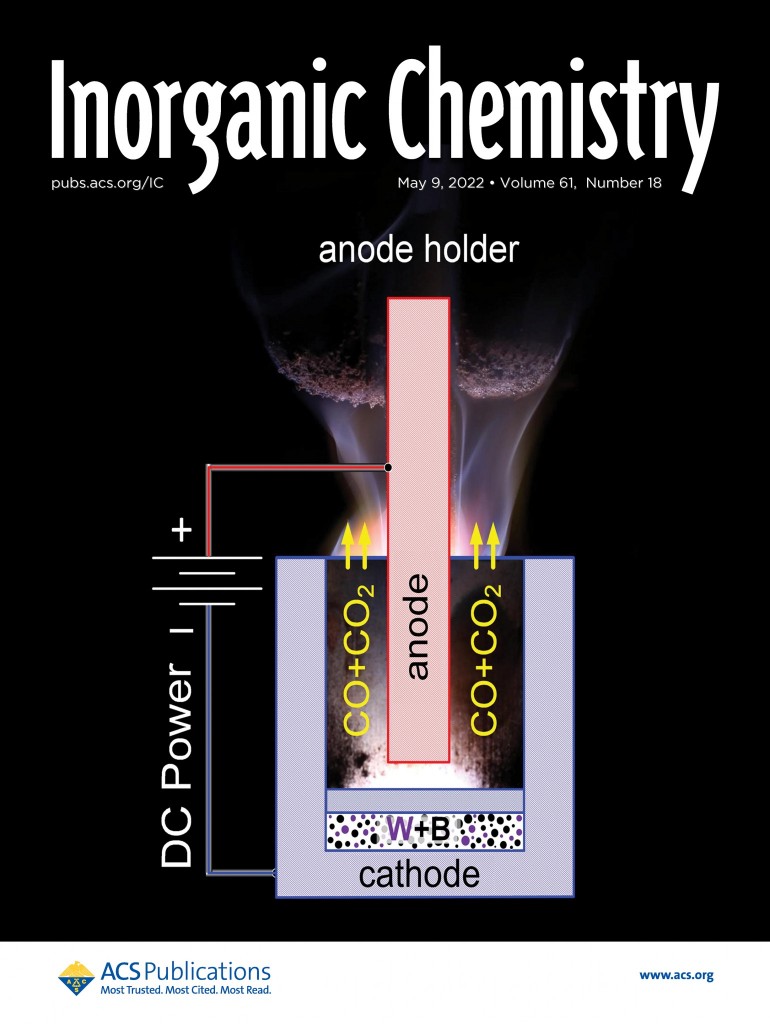 |
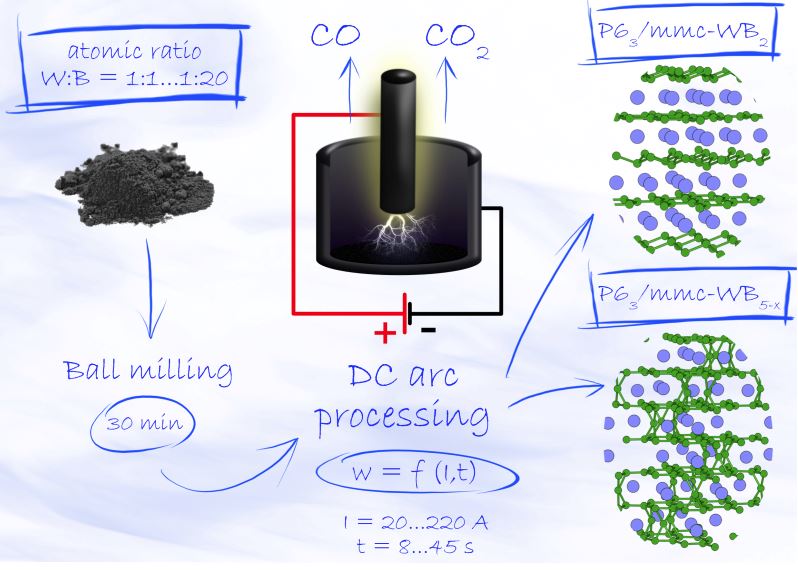 |
WB5−x: Synthesis, Properties, and Crystal Structure—New Insights into the Long-Debated Compound (Adv. Sci. 2020, 7, 2000775) PDF
The recent theoretical prediction of a new compound, WB5, has spurred the interest in tungsten borides and their possible implementation in industry. In this research, the experimental synthesis and structural description of a boron-rich tungsten boride and measurements of its mechanical properties are performed. The ab initio calculations of the structural energies corresponding to different local structures make it possible to formulate the rules determining the likely local motifs in the disordered versions of the WB5 structure, all of which involve boron deficit. The generated disordered WB4.18 and WB4.86 models both perfectly match the experimental data, but the former is the most energetically preferable. The precise crystal structure, elastic constants, hardness, and fracture toughness of this phase are calculated, and these results agree with the experimental findings. Because of the compositional and structural similarity with predicted WB5, this phase is denoted as WB5−x. Previously incorrectly referred to as “WB4,” it is distinct from earlier theoretically suggested WB4, a phase with a different crystal structure that has not yet been synthesized and is predicted to be thermodynamically stable at pressures above 1 GPa. Mild synthesis conditions (enabling a scalable synthesis) and excellent mechanical properties make WB5−x a very promising material for drilling technology.
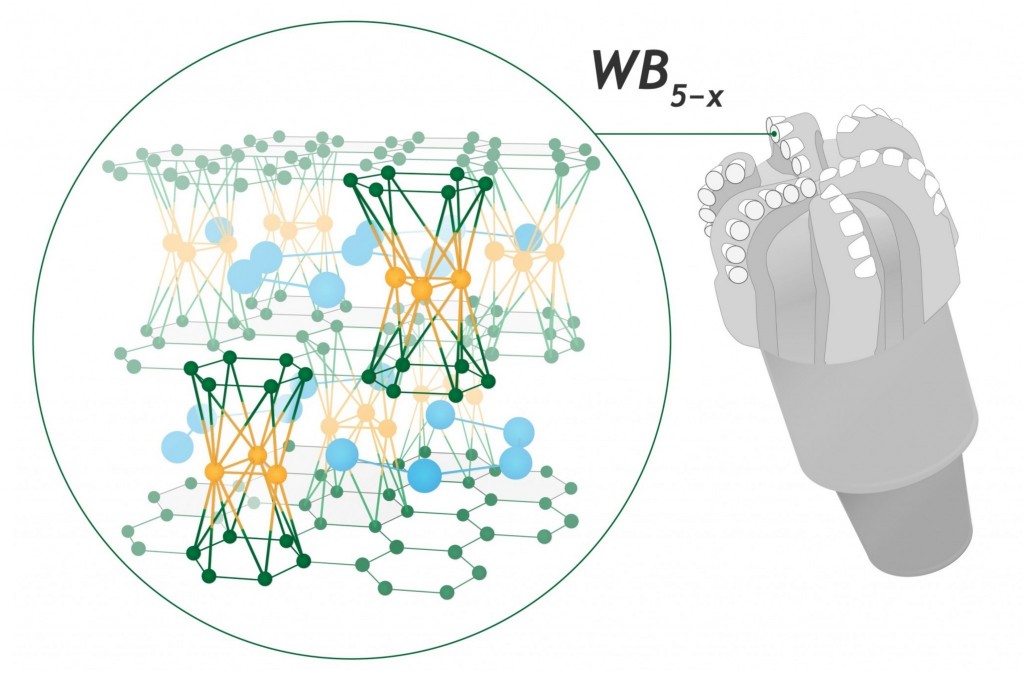 |
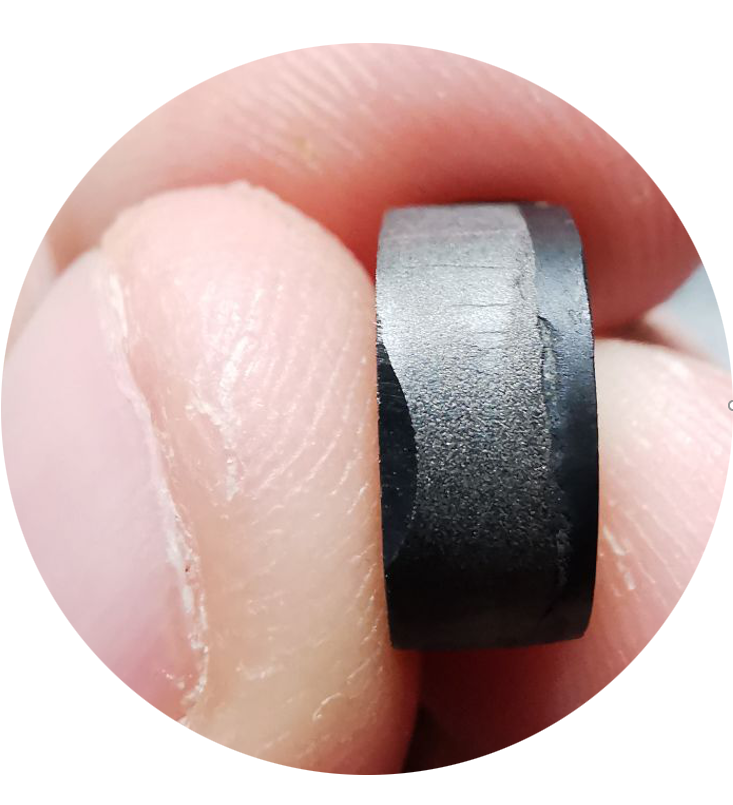 |
New Tungsten Borides, Their Stability and Outstanding Mechanical Properties (J. Phys. Chem. Lett. 2018, 9, 12, 3470–3477) PDF
We predict new tungsten borides, some of which are promising hard materials that are expected to be stable in a wide range of conditions, according to the computed composition–temperature phase diagram. New boron-rich compound WB5 is predicted to be superhard, with a Vickers hardness of 45 GPa, to possess high fracture toughness of ∼4 MPa·m0.5, and to be thermodynamically stable in a wide range of temperatures at ambient pressure. Temperature dependences of the mechanical properties of the boron-richest WB3 and WB5 phases were studied using quasiharmonic and anharmonic approximations. Our results suggest that WB5 remains a high-performance material even at very high temperatures..
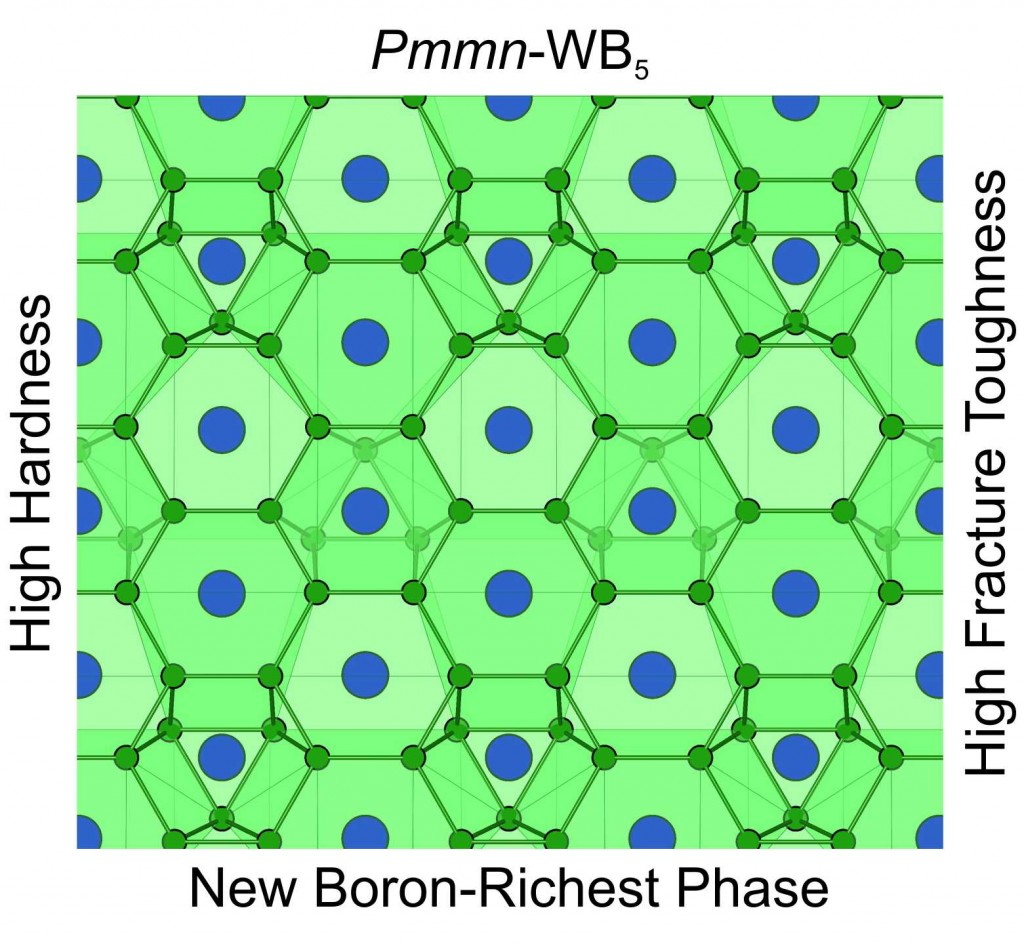 |
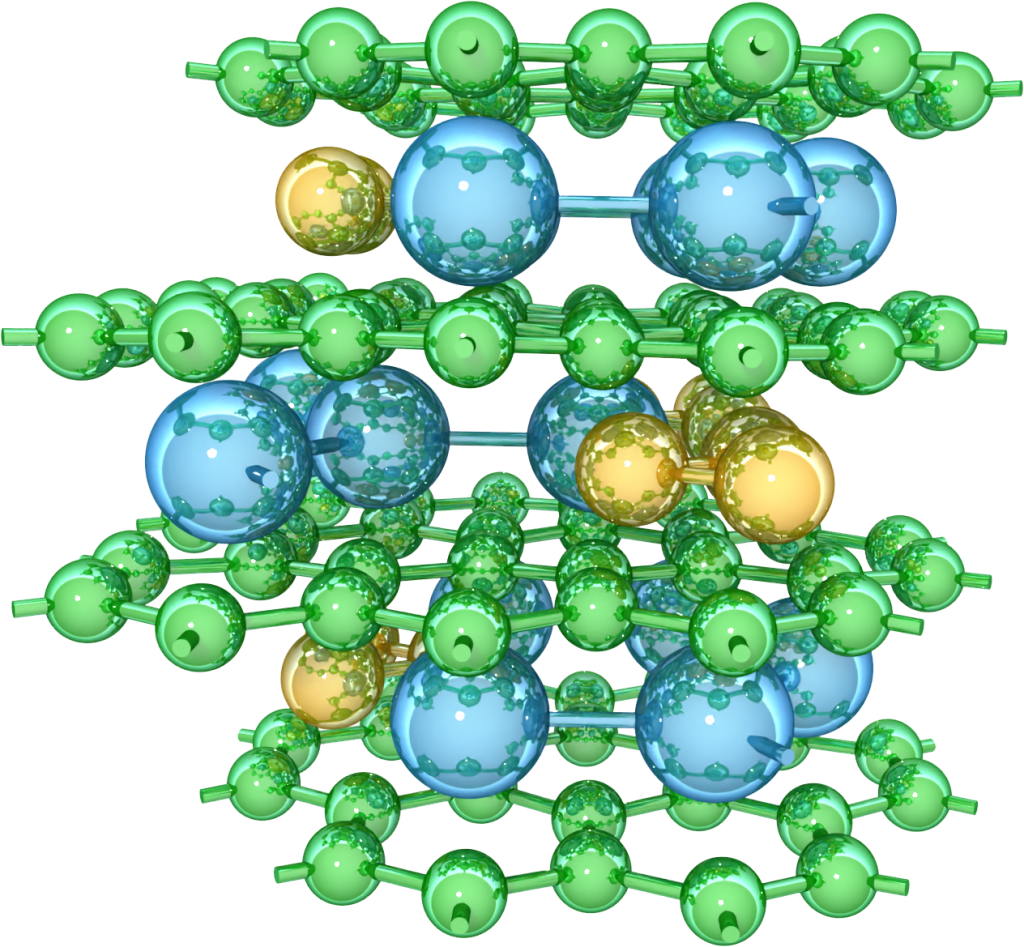 |
